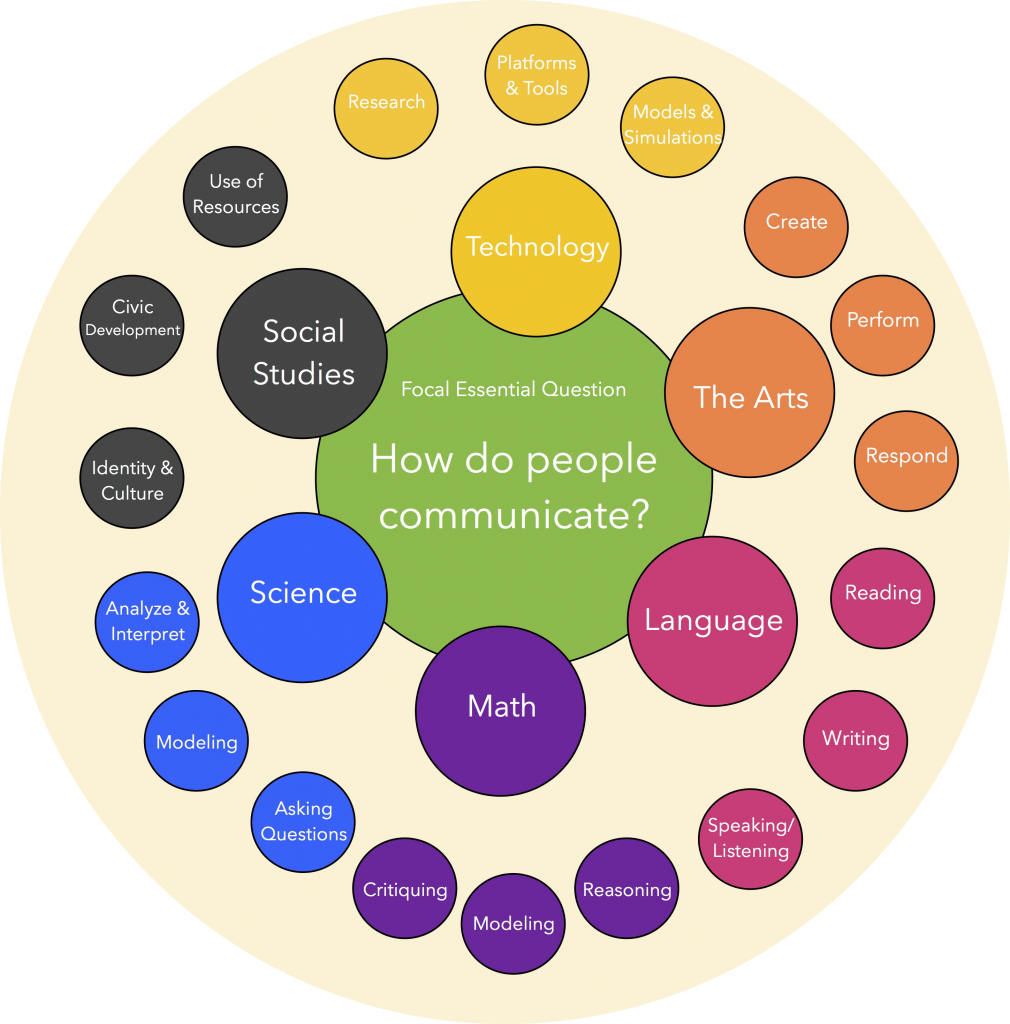Susan Riley | April 2014
How to Connect your Entire Curriculum
One of the daunting tasks that lie ahead of all educators in the summer is revising and editing curriculum. And with all of the new standards that are being released (Common Core, Next Generation Science, and National Coalition for Core Arts Standards), it’s not a matter of IF but WHEN we will need to do this work. This is actually an exciting time because it provides all of us with an opportunity for integrating our standards and for re-imagining what “school” really looks like! This is your chance to connect your entire curriculum and still maintain the integrity of your own content. What an enormous privilege and responsibility to both our arts area and our students.
But while this may be an exciting time, it’s certainly not an easy task. It can be a challenge to find aligned standards, to connect those standards naturally and then to create lessons that provide students with meaningful ways of exploring and interpreting their learning through those standards. Probably just reading that sentence made you put your head in your hand. Never fear! There’s a great process out there that helps you to find these connections easily and does a lot of the background development work for you simultaneously. It’s called: curricular schema mapping.
What is Schema Mapping?
In essence, a schema are all of the ways that you can connect to a singular topic or idea. I saw this done with a computer simulation regarding math processes at a conference in October, and immediately, the potential for its use in curriculum writing came to mind. For instance, if you think of the word “run”, your brain has a digital filing system for all of the ways it could interpret that word. Are you going outside for a run? Are you going to run on a treadmill? Are you running to the store? Are you on the run from something else? Are you turning on a piece of equipment to run? Think about all of the files that your brain needs to sort through in a nanosecond to determine what that one word is describing. And your brain can only access files that it has experience with or knows about. If you’ve never had to run a computer, you wouldn’t know what that interpretation of the word actually means.
Applying Schema Mapping to Curriculum
The same is true for our curriculum models. Unless our students have experience with our content both in isolation and in relationship to another area, they won’t have its full range of schematic references. We can find these areas of connection by creating a schema map prior to revising our curriculum so that we know all of the ways our content intersects with others and how we can begin to design lessons that help our students experience those connections.
Step 1: Find your Essential Question
Think about an essential question that acts as a thread across your entire curriculum. For instance, you might choose something like “What is creativity?” or “How do people communicate?” because you can touch on this question multiple times through multiple standards. Remember, an essential question doesn’t have a right or a wrong answer, is not able to be answered with a yes or a no, and causes you to think deeply about a response that includes supportive evidence.
Step 2: Label Contents that Address Your Essential Question
Take a look at the example below. If my focal essential question is “How do people communicate?”, I could answer that question through the lenses of the arts, language, math, social studies, science or technology. This is just one example. There are many other content areas that could use this same question, but you get the idea. This will begin to help you see the possibilities for connecting with other content areas and if that connection makes sense.

Step 3: Unpack the Essential Question in Each Selected Area
After you have outlined the content areas that provide the lens to your question, then you can begin to unpack the lenses through various frames. In this example, we’ve found 3 practices, anchor standards or processes through each content area that could be used to explore that essential question. You’ll notice that some of these frames are the same (such as the “modeling” frame) and these would be a good place to start to explore standards that may align in these two areas. Once you’ve gotten to this step, then you’ll have a wealth of ways to connect with other areas all year long throughout your entire curriculum.

By selecting just 5 essential questions for the year, you’ll have a tightly-aligned, integrated learning model for your students that will also help to guide the direct instruction of each content area.
Do you use essential questions or curriculum mapping? If so, what are some successes and challenges you’ve discovered?



